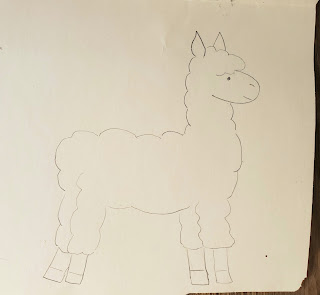Basic Information
Peru is a country in northwestern South America. The Andes Mountains run from north to south seperating Peru in half. The western portion is mainly desert and the eastern portion is heavily forested.
Capital- Lima
Population- 33 million
Size- 496,200 square miles
Currency- sol
National Animal- the vicuna (a relative of the llama)
Flag-
Famous Places and Landmarks
Machu Picchu- Machu Picchu is a 15th century Incan site located high in the Andes mountains of modern day Peru.
You can learn more about it with these resources:
-Machu Picchu video from FreeSchool
-Machu Picchu 101 video from National Geographic
The Nazca Geoglyphs- The Nazca Lines are a series of massive geoglyphs located in the desert of south Peru.
You can learn more about them with these resources:
-Ancient Drawings Discovered in Peru video from National Geographic
-Nazca Lines Facts for Kids from Kiddle
The Andes Mountains- The Andes are a mountain range that run along the western side of the South American continent. It is the longest continental mountain range in the world.
Recipes
Peruvian Hot Chocolate- Peruvian style hot chocolate has always been a favorite treat in our household!
For this recipe you will need:
-1/2 cup unsweetened cocoa powder
-1/2 cup sugar
-3 cups of water
-1 1/2 cups milk
-A cinnamon stick
-1/2 teaspoon of ground cloves
-A pinch of salt
Mix the dry ingredients in a medium sized saucepan.
Wisk in water and heat over medium/high heat until the sugar and cocoa powder are fully dissolved.
Add the milk and remove from heat. Serve hot.
Here are a few other Peruvian recipes to try:
Crafts and Activities
Nazca Line Activity
The Nazca Lines are a series of massive geoglyphs located in the desert of south Peru. The geoglyphs are thought to have been made between 600 and 200 BC. There are over 300 figures including various animals, plants, and geometrical designs. The geoglyphs were made by removing the top layer of sand, soil, and rocks, leaving the lighter colored rock underneath exposed.
The geoglyphs are huge and can only be viewed properly from an airplane, why the ancient Nazca people made them is still a mystery.
Look at some pictures of the Nazca geoglyphs. A simple Google Image search works and then try replicating a few.
For this activity you will need:
-White paper
-Sand
-A tool for etching in the sand, a paint brush works well but you could also use a stick or your finger.
-A tray or baking dish big enough to lay your piece of paper in
Start by placing a piece of white paper in the tray or baking sheet.
Sprinkle a thin layer of sand over the sheet of white paper.
Etch designs or a figure in the sand with a paintbrush or your finger revealing the white paper underneath.
Take a picture when you are done and then spread the sand back out and try another one!
Llama Craft
Llamas have been used as pack animals in Peru since the dawn of the Inca empire. Some of the native people of the area even dress their llamas in fancy saddles and tassels. Look at some pictures of traditional Peruvian llamas and then try the fun llama craft below!
For this craft you will need:
-A piece of tag board or cardstock
-Scissors
-Markers
-Yarn
Sketch or trace a simple llama shape onto a piece of tag board or cardstock. You want it to be large enough to fill most of the page.
Cut it out.
Cut 4 small slits across the top of the llamas back, and 4 slits directly across from them on the llamas belly.
Cut a piece of yarn about a foot long. Tie a knot in one end and slide it into the first slit on the llamas back. The knot should be in the back, securing the yarn in place. Add a piece of tape if needed.
Working left to right, thread the yarn through all the slits. Knot or tape the end behind the final slit. You should now have a simple loom on your llamas torso.
Cut another piece of yarn, a couple feet long. This one will be used to weave through the loom you just made. Tie one end of your yarn to the upper left hand corner of your loom. Weave this piece of yarn through your loom going over, under, over, under. When you reach the end of one row, come back the opposite direction, using the opposite pattern.
When your woven saddle is complete, tie the end and cut off any excess yarn.
Add details to your llama with markers.
Additional Activity Ideas
-Visit a zoo with a South American exhibit
-Learn a little Spanish (the official language of Peru). Duolingo is a great free resource.
-Learn about the Inca empire: Incas for Kids
Additional Resources
-Geography for Kids: Peru from Ducksters
-Peru Country Profile from National Geographic Kids
-Peru Facts for Kids (video)
-Peru! (video) from Geography Now!
-Peru: Machu Picchu (video) from Travel Kids
If you enjoyed this post be sure to check out the other posts in my Learning About the Countries of the World series!
Follow me on











Comments
Post a Comment